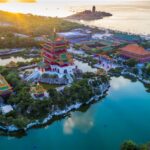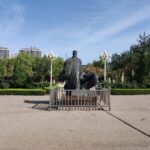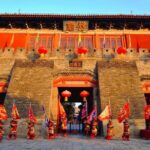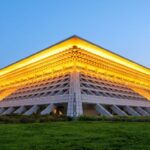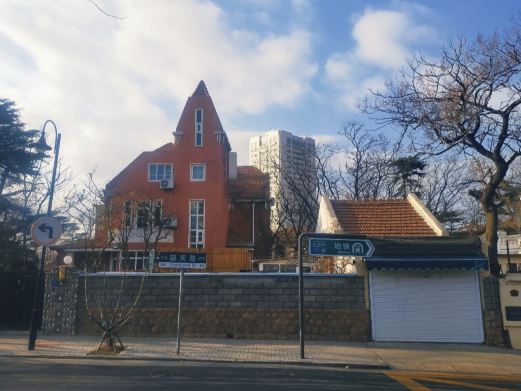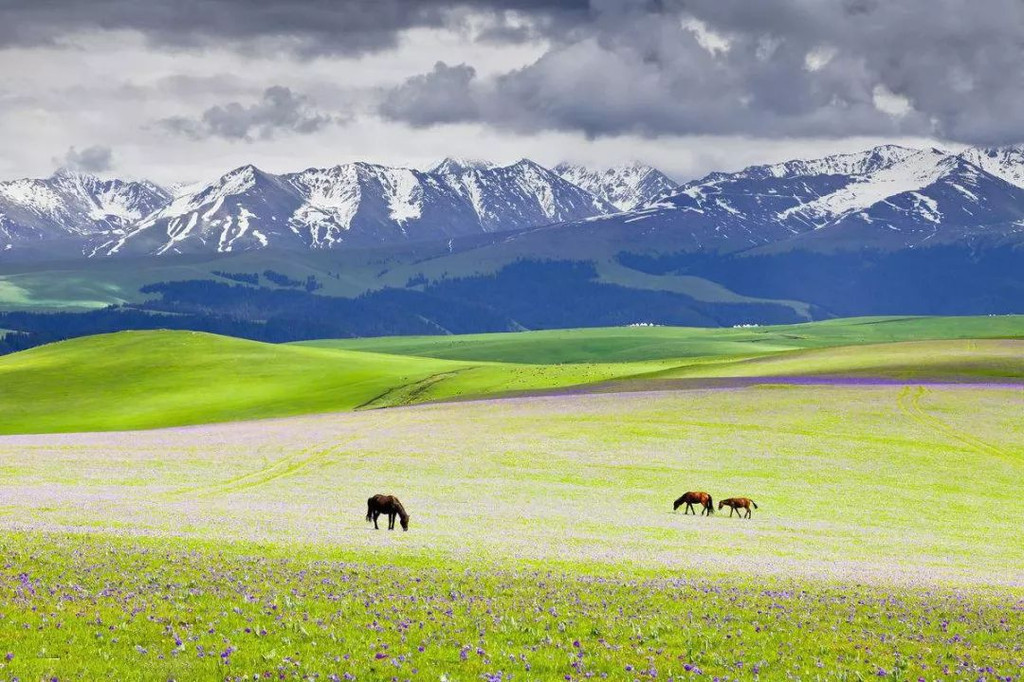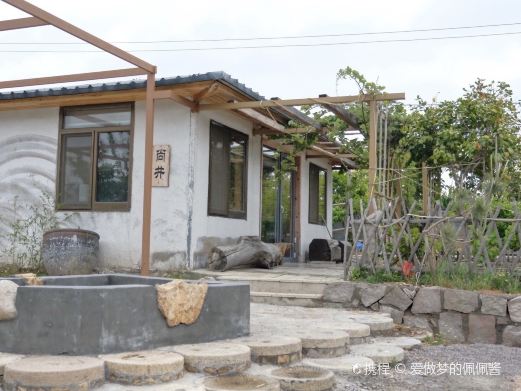The Song Dynasty Imperial Street is located on the northern section of Zhongshan Road in Kaifeng City. It is a Song-dynasty-style commercial street built in 1988 to recreate the style of the imperial street during the Song Dynasty. According to historical records, the Eastern Capital of the Northern Song Dynasty was magnificent, with one of the important streets being the Imperial Street. The Imperial Street was a通关 avenue on the north-south central axis of the Eastern Capital, starting from the Xuande Gate of the Imperial Palace, passing through the Zhuque Gate of the inner city, and ending at the Nanxun Gate of the outer city, stretching for more than ten miles. It was the main road for the emperor to worship ancestors, hold grand ceremonies in the southern suburbs, and travel in and out of the palace, hence it was called the “Imperial Street,” also known as the Imperial Road, Tian Street, or Song Duanli Street. The newly built Imperial Street was constructed on the site of the original Imperial Street. Along the 400-meter-long street, there are rows of pavilions and shops facing each other on both sides. Walking down the street, the first thing that catches your eye is the tall plaques and banners. Upon closer inspection, you will find that these signs, along with the couplets on both sides of the shop doors, are all derived from Song Dynasty documents, not only looking antique but also well-documented. These dozens of shops mainly deal in Kaifeng specialties, traditional goods, and antique calligraphy and paintings. Strolling along the Imperial Street gives one a sense of time reversal, as if returning to the Bianjing of a thousand years ago. According to Meng Yuanlao’s ‘Eastern Capital: A Dream of Splendor,’ the Imperial Street was about 200 meters wide, divided into three parts. The middle part was the imperial road, exclusively for the royal family, with no access for pedestrians. On both sides, there were ditches with lotus flowers, and on both banks, there were peach, plum, pear, and coconut trees. The banks were marked by black lacquered railings. Beyond the two ditches, on both the east and west sides, were the imperial corridors, areas for commoners’ activities, with shops facing the street where people traded, creating a bustling atmosphere. Whenever the emperor went out, the common people would gather on both sides to compete to watch the royal dignity and grandeur. The newly built Imperial Street was constructed on the site of the original Imperial Street. It starts from Xinjiekou in the south and ends at Wu Chaomen in the north. Although it is not as long as the ancient Imperial Street, its scale and momentum are rare in China. At the southern end of the Imperial Street stands a tall archway, with a stone elephant sculpture in front, ridden by a warrior holding a spear, exuding solemnity and majesty. The street is open all year round, accessible 24/7.
Song Dynasty Imperial Street
The Song Dynasty Imperial Street is located on the northern section of Zhongshan Road in Kaifeng Cit[...]

